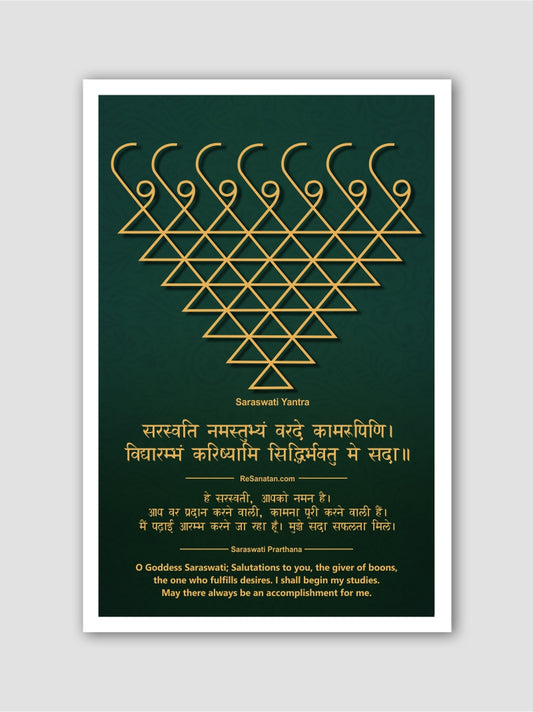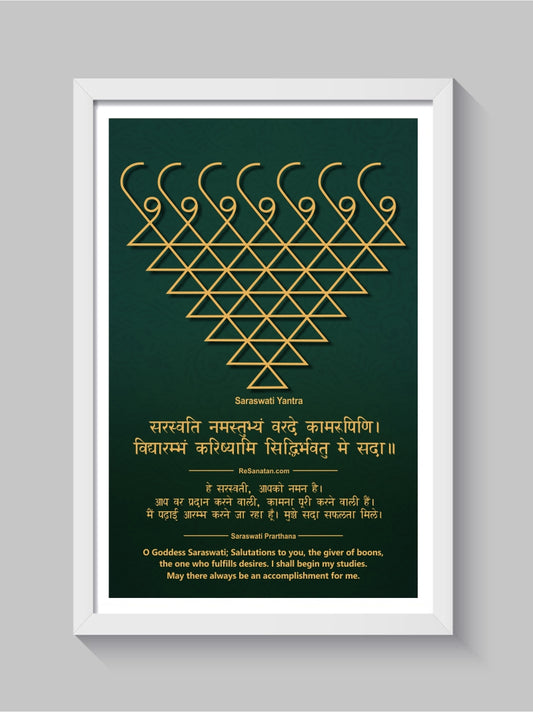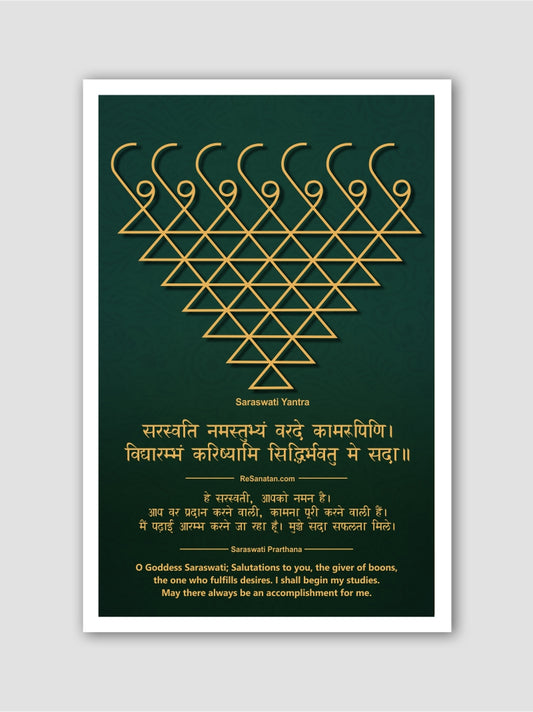Ramana Maharshi: The Sage of Self-Realization and Teachings of Inner Peace
Share
Ramana Maharshi, born Venkataraman Iyer on December 30, 1879, is considered one of the most revered spiritual figures of the 20th century. His teachings and life have inspired millions worldwide, guiding seekers toward self-realization and the experience of pure consciousness. Known for his profound silence, simplicity, and direct path to self-inquiry, Ramana Maharshi’s life is a testament to the power of inner realization.
Early Life and Spiritual Awakening of Ramana Maharshi
Ramana Maharshi, originally named Venkataraman Iyer, was born on December 30, 1879, in the small village of Tiruchuzhi in Tamil Nadu, India. His family was part of the Brahmin caste, and his father, Sundaram Iyer, was a respected pleader. Despite this auspicious beginning, Ramana’s early years were marked by ordinary activities rather than any signs of future spiritual greatness. He was a regular boy who enjoyed playing games, engaging in sports, and showing a keen interest in the world around him.
Growing up, Venkataraman was known for his physical strength and intelligence, but there were no outward indications that he would later become a spiritual luminary. His education was average; he was not particularly interested in studies, although he was known for his retentive memory. Life proceeded normally until an event in his teenage years that would dramatically alter his life’s trajectory.
The Turning Point: Fear of Death and Spiritual Awakening
The pivotal moment in Ramana Maharshi's life occurred in 1896 when he was just 16 years old. Without any forewarning, he was struck by an intense and overwhelming fear of death. This experience took place in his uncle’s house in Madurai. The fear was so real and immediate that it shook him to his core. Unlike most people, who might seek external reassurance or consolation, Venkataraman turned his attention inward to confront this fear directly.
He lay down on the floor, imitating the pose of a dead body, with his limbs stretched out stiffly. As he did this, he engaged in a profound inner inquiry. He asked himself, "What exactly is it that dies? Is this body 'I'? Though this body may die, I do not die." He then realized with clarity that the body might perish, but there was something deeper, something more fundamental that remained untouched by death. This was his true Self—pure consciousness, beyond the physical form.
This spontaneous self-inquiry led him to an immediate and direct realization of his eternal nature. He experienced a state of pure awareness and detachment from the physical body, which he understood as not being his true self. The revelation was not an intellectual understanding but a direct and experiential knowing of his essence. This intense experience eradicated his fear of death and established him in the state of self-awareness.
Transformation and Immediate Changes
This experience marked the beginning of a profound and irreversible transformation in Venkataraman’s life. From that moment on, he lost interest in worldly matters, including his studies, relationships, and even his own body. He became indifferent to the physical needs such as food and comfort, as his focus shifted inward to the state of unbroken awareness of the Self. The young boy who was once interested in playing and mingling with friends became absorbed in a deep inner stillness and silence.
Venkataraman's personality changed drastically. He became quiet, introspective, and withdrawn, spending long periods in meditation. His family and friends noticed these changes and were puzzled, unable to understand the profound inner transformation he had undergone. Despite these visible changes, he continued to live with his family for a short while, though his inner state of self-realization remained constant and unshakable.
Departure to Arunachala
Just six weeks after his awakening, Venkataraman felt an irresistible pull towards the sacred mountain of Arunachala in Tiruvannamalai, a place he had never visited but had heard of from childhood stories. He later explained that Arunachala was not just a mountain to him but a physical manifestation of the divine. In August 1896, he left his home, family, and worldly life without informing anyone. He took a train to Tiruvannamalai, a journey that marked his final departure from his previous life.
Upon arriving at Arunachala, Venkataraman threw away his remaining possessions, including a small amount of money, and took up residence in the temple precincts. He shaved his head, signifying the renunciation of his former identity. From that day on, he was no longer Venkataraman; he was now Ramana, the sage of Arunachala. For the next few years, Ramana Maharshi lived in a state of deep absorption in the Self, completely indifferent to the external world. He remained silent for long periods, and his only interactions with others were through gestures or brief responses. During these early years, he spent much of his time meditating in the various temples and caves around Arunachala.
This period was marked by intense tapas (spiritual austerity), where he was completely absorbed in the inner state of self-awareness. He paid little attention to his physical needs and was indifferent to the hardships he endured, such as lack of food, shelter, and the physical challenges of living in a rugged, natural environment.
Teachings and Philosophy of Ramana Maharshi
Ramana Maharshi’s teachings are characterized by their simplicity, directness, and profound depth. Despite his lack of formal education in philosophy or scriptures, his insights into the nature of reality and the Self have had a lasting impact on spiritual seekers around the world. His core teaching centers around the practice of self-inquiry, a method he considered the most direct path to self-realization.
Core Teaching: Self-Inquiry (Atma Vichara)
At the heart of Ramana Maharshi's teachings is the practice of self-inquiry, known as "Atma Vichara" in Sanskrit. This method involves a deep and persistent questioning of the nature of the self. The central question he encouraged seekers to ask is, "Who am I?" This inquiry is not meant to be an intellectual exercise or a philosophical debate. Instead, it is a direct and experiential investigation into the true nature of the self, beyond the body, mind, and ego.
The process of self-inquiry begins by focusing attention on the source of the "I" thought—the fundamental sense of self that underlies all thoughts and experiences. Ramana taught that every thought and feeling is associated with the "I" thought, which in turn creates the illusion of a separate self. By tracing this "I" thought back to its source, one can realize the true Self, which is pure, unchanging awareness.
Ramana Maharshi emphasized that this Self is not something to be attained or acquired. It is already present as the underlying reality of our existence. The purpose of self-inquiry is to remove the ignorance that obscures this ever-present reality. He likened this process to removing the layers of an onion; as one peels away the layers of identification with the body and mind, the true Self is revealed.
The Nature of the Self
Ramana Maharshi’s teachings on the nature of the Self are rooted in the Advaita Vedanta philosophy, which posits that the individual self (Atman) and the universal consciousness (Brahman) are one and the same. He taught that the Self is pure consciousness, unchanging, eternal, and beyond the limitations of time and space. It is the substratum of all experiences, the silent witness to the play of thoughts, emotions, and sensations.
According to Ramana, the Self is not the body, mind, or ego. These are merely transient phenomena that appear and disappear. The Self is the awareness that perceives these phenomena but is not affected by them. This realization, he taught, leads to liberation (moksha) from the cycle of birth and death and the suffering associated with identification with the body and mind.
The Illusion of the Ego and the Mind
A significant aspect of Ramana Maharshi’s teachings is the concept of the ego as an illusion. He explained that the ego, or the "I" thought, is the root cause of all suffering and ignorance. The ego arises when the pure Self identifies with the body and mind, creating the illusion of a separate, individual entity. This identification leads to desires, attachments, and the perception of duality, resulting in the experience of pleasure and pain.
Ramana taught that the mind derives its power from the Self, but in its identification with thoughts and objects, it creates a sense of separation and individuality. He often used the analogy of the moon and the sun to explain this relationship. Just as the moon shines with the reflected light of the sun, the mind shines with the reflected light of the Self. When the mind turns inward and seeks its source, it merges with the Self, and the illusion of the ego is dissolved.
The Role of Silence
One of the most profound aspects of Ramana Maharshi’s teachings is his emphasis on silence as the highest form of instruction. He often stated that his most potent teaching was his silent presence. For Ramana, silence was not merely the absence of speech but a state of pure being, free from the disturbances of the mind. In his presence, many seekers experienced a deep sense of inner peace and a direct transmission of the state of self-realization.
He believed that the truth of the Self is beyond words and concepts and can be directly experienced through the silence of the mind. Words, he said, can only point to the truth but cannot capture it. This belief is reflected in his minimalist approach to verbal instruction. While he answered questions and provided guidance, he often encouraged devotees to seek the answers within themselves through self-inquiry and meditation.
The Direct Path and Simplicity of Practice
Ramana Maharshi's approach to spirituality is often described as the "Direct Path" because it bypasses the complexities of ritual, scripture, and dogma. He did not prescribe elaborate spiritual practices, ascetic disciplines, or adherence to specific religious doctrines. Instead, he pointed directly to the essence of who we are, emphasizing that the truth is always present and accessible to all, regardless of their background or level of spiritual development.
He taught that liberation is not something that requires time, effort, or attainment of any kind. It is the natural state of being, already present but obscured by the ignorance of the mind. By turning attention inward and questioning the reality of the ego, one can directly experience this state of liberation.
The Universal Appeal of His Teachings
While rooted in the Advaita Vedanta tradition, Ramana Maharshi’s teachings have a universal appeal that transcends religious and cultural boundaries. He did not advocate for any particular religion or philosophy but spoke to the universal truth underlying all spiritual traditions. His message of self-inquiry and the realization of the Self resonated with people from various backgrounds, including Hindus, Christians, Buddhists, and those without any religious affiliation.
Ramana’s teachings also extend beyond the realm of spirituality to offer practical guidance for daily living. By encouraging self-inquiry, he provided a means for individuals to confront and dissolve the root causes of their suffering, such as fear, attachment, and the sense of separateness. His emphasis on simplicity, humility, and inner stillness offers a pathway to peace and fulfillment in the midst of life's challenges.
The Legacy of Ramana Maharshi
Ramana Maharshi's impact on the world of spirituality is vast and enduring. Despite leading a life of simplicity and relative seclusion, his teachings have reached a global audience, offering profound insights into the nature of self and consciousness. His legacy is not just in the words he spoke or the books written about him, but in the transformative power of his presence and the timeless wisdom he imparted. His influence can be seen in various aspects of spiritual practice, literature, and the lives of countless individuals who have been touched by his teachings.
Ramanasramam: The Spiritual Hub
One of the most tangible aspects of Ramana Maharshi’s legacy is the Ramanasramam, the ashram that grew around him in Tiruvannamalai. What began as a small community of devotees has evolved into a major spiritual center that attracts visitors from around the world. The ashram, located at the base of the sacred Arunachala mountain, serves as a place of pilgrimage and spiritual retreat for those seeking to experience the tranquility and wisdom associated with Ramana Maharshi.
Ramanasramam continues to preserve and disseminate Ramana's teachings through various means, including publications, recorded talks, and guided meditation practices. The ashram offers a serene environment where individuals can engage in self-inquiry, meditation, and contemplation, fostering an atmosphere conducive to inner exploration and spiritual growth. The simplicity and purity of life at the ashram reflect the principles that Ramana Maharshi lived by, making it a living embodiment of his teachings.
Spread of Teachings and Literature
While Ramana Maharshi himself wrote little, his teachings have been extensively documented and preserved through the efforts of his disciples and devotees. His conversations with seekers were recorded and compiled into several seminal works, such as "Talks with Sri Ramana Maharshi," "The Collected Works of Ramana Maharshi," and "Be As You Are." These texts offer a comprehensive insight into his teachings, covering a wide range of topics related to self-inquiry, the nature of the mind, and the path to self-realization.
These works have been translated into numerous languages, making his teachings accessible to a global audience. The simplicity and universality of his message have resonated with people from diverse backgrounds, leading to a growing interest in his philosophy and practice. In addition to the written word, Ramana's teachings have been shared through various media, including audio recordings, videos, and online resources, further extending his reach in the modern digital age.
Influence on Contemporary Spiritual Teachers
Ramana Maharshi’s influence extends beyond his immediate circle of devotees to contemporary spiritual teachers and traditions. His emphasis on self-inquiry and the direct experience of the Self has inspired many modern spiritual leaders and movements. Notable figures such as Nisargadatta Maharaj, Papaji (H.W.L. Poonja), and Eckhart Tolle have acknowledged Ramana's impact on their teachings.
Papaji, one of Ramana's most well-known disciples, played a significant role in spreading his teachings worldwide, particularly in the West. Through Papaji and others, the practice of self-inquiry became a central theme in various non-dualistic spiritual traditions. The core message of finding liberation through the direct realization of the Self has become a foundational aspect of many contemporary spiritual practices.
Ramana Maharshi Quotes and Their Significance
Ramana Maharshi, known for his profound wisdom and deep insight into the nature of the self, conveyed his teachings not just through his presence and silence but also through concise and powerful statements. His quotes distill complex spiritual concepts into simple, accessible language, providing guidance and inspiration for seekers. These quotes encapsulate his teachings on self-inquiry, the nature of the self, the illusion of the ego, and the path to self-realization. Here are some of his most impactful quotes and their deeper meanings.
1. "Who am I?"
This question is the cornerstone of Ramana Maharshi's teaching and the essence of self-inquiry (Atma Vichara). He taught that by persistently asking this question and turning inward, one can trace the source of the "I" thought back to the true Self. This practice helps dissolve the ego, which is the root cause of suffering and ignorance.
Significance: The question "Who am I?" is not meant to be answered intellectually. It is a tool for introspection, leading the seeker beyond the mind and its constructs to the direct experience of the Self, which is pure consciousness. This inquiry exposes the false identification with the body and mind, revealing the eternal, unchanging nature of one's true self.
2. "The mind is nothing but a bundle of thoughts. The thoughts have their root in the 'I' thought. He who conquers the 'I' thought is a real hero."
Ramana Maharshi emphasized that the mind is essentially a collection of thoughts, all of which revolve around the central "I" thought or ego. By investigating the nature of this "I" thought through self-inquiry, one can transcend the mind and realize the Self.
Significance: This quote points to the nature of the mind as an aggregation of thoughts centered around the ego. By conquering or dissolving the "I" thought, the seeker transcends the mind and experiences the true Self, which is beyond all mental activity. This realization brings freedom from the limitations and sufferings imposed by the mind.
3. "Your own Self-realization is the greatest service you can render the world."
Ramana Maharshi taught that the highest form of service is the realization of one's true nature. When a person realizes the Self, they naturally embody peace, compassion, and wisdom, which positively influences the world around them.
Significance: This quote suggests that personal transformation and inner peace have a profound impact on the collective consciousness. By realizing the Self, one contributes to the overall harmony and well-being of the world. This inner realization is more beneficial than any external action, as it addresses the root of suffering and ignorance in oneself and others.
4. "Happiness is your nature. It is not wrong to desire it. What is wrong is seeking it outside when it is inside."
Ramana Maharshi often spoke about the true nature of happiness, emphasizing that it is an inherent quality of the Self. He taught that people mistakenly seek happiness in external objects, relationships, and achievements, but true happiness is found within.
Significance: This quote highlights the misconception that happiness can be attained through external means. It serves as a reminder that the source of lasting happiness is within, and by turning inward and realizing the Self, one can experience a state of unbroken peace and contentment.
5. "There is neither creation nor destruction, neither destiny nor free will, neither path nor achievement. This is the final truth."
In this statement, Ramana Maharshi points to the ultimate reality of non-duality (Advaita). From the perspective of the Self, there is no distinction between creation and destruction, or between the concepts of destiny and free will. These are constructs of the mind, which dissolve upon the realization of the Self.
Significance: This quote encapsulates the non-dualistic view that all dualities and distinctions are illusory. In the state of self-realization, the seeker understands that there is only one infinite, unchanging reality. The apparent dualities of the world are seen as projections of the mind and not the ultimate truth.
6. "Silence is also conversation."
Ramana Maharshi often emphasized the power of silence as a means of communication and teaching. For him, silence was the purest form of instruction, transcending words and concepts. He believed that the highest truth could be directly transmitted through silent presence.
Significance: This quote underscores the idea that silence is a form of communication that conveys the essence of truth more directly and effectively than words. In the presence of a realized being like Ramana Maharshi, many experienced a deep sense of peace and understanding without the need for verbal instruction. Silence, in this context, is the language of the Self.
7. "The self is here and now, it is the only Reality. There is nothing else."
Ramana Maharshi taught that the Self is not something to be attained in the future or found in some distant place. It is ever-present, here and now, as the fundamental reality of one's existence. Everything else is transient and illusory.
Significance: This quote serves as a reminder that the search for the Self does not require going anywhere or achieving anything. The Self is already present; it is the substratum of all experiences. By realizing this truth, one can shift their focus from the impermanent to the eternal, leading to liberation from suffering.
8. "The thought 'I am not realized' is the obstruction to realization. Give up that thought."
Ramana Maharshi pointed out that the belief in one's non-realization is itself an obstacle to realizing the Self. The very notion that one is separate from the Self or that realization is something to be attained in the future creates a barrier to experiencing the truth.
Significance: This quote highlights the paradox of the spiritual path. The idea that one is not already realized is a product of ignorance. Realization is not about acquiring something new but about recognizing what has always been present. By letting go of the thought that one is not realized, the seeker can more easily recognize their true nature.
9. "Your duty is to be, and not to be this or that."
Ramana Maharshi often stressed the importance of simply "being" rather than identifying with specific roles, labels, or identities. The true Self is beyond all attributes and definitions, and the path to realization involves resting in the pure state of being.
Significance: This quote encourages seekers to go beyond the ego's tendency to identify with various roles and identities. By focusing on the essence of being itself, rather than trying to be a certain way or achieve specific states, one can experience the unconditioned nature of the Self.
10. "The end of all wisdom is love, love, love."
While Ramana Maharshi’s teachings are often seen as emphasizing self-inquiry and knowledge (jnana), he also spoke about the central role of love. He believed that true wisdom culminates in the realization of love, which is the natural expression of the Self.
Significance: This quote suggests that the realization of the Self leads to the spontaneous expression of love and compassion. Love is not separate from wisdom but is its highest form. In the state of self-realization, the boundaries between self and other dissolve, resulting in unconditional love for all beings.
Conclusion
Ramana Maharshi's life and teachings offer a profound reminder of the simplicity and directness of the path to self-realization. His emphasis on self-inquiry as a means to dissolve the ego and realize the true Self resonates deeply with those seeking inner peace and ultimate truth. His silent influence, universal appeal, and unwavering dedication to the truth have cemented his place as one of the great spiritual luminaries of modern times. Through his life and legacy, Ramana Maharshi continues to inspire and guide seekers on the journey to discovering their true nature.
























